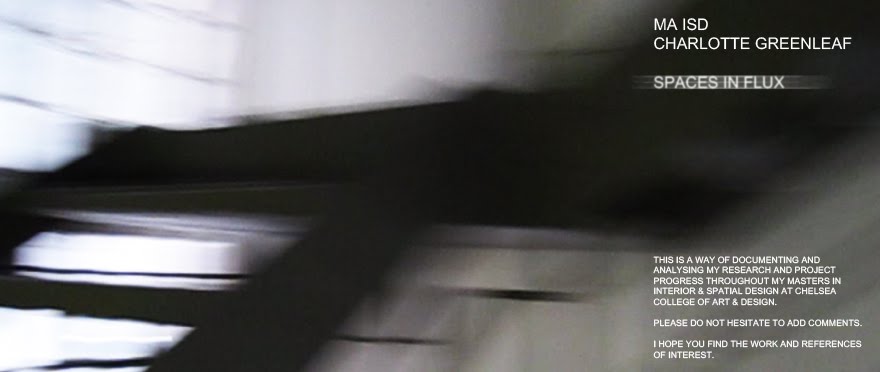Movement Through Space
The design of buildings based on predetermined routes
Examples:
• Mobius House (UN Studio) - designed around a flexible program where daily activities can take place at any point on either of the two routes
• Mercedes-Benz Museum Stuttgard - visitor is immersed in continuous movement of shifting orientations and crossed viewpoints
As we walk through a space:
• we engage with concepts and experiences of place, space and site
• we relate one location to another
• we rethink place as unfixed and as site performed
• the subject is temporarily positioned in motion between a series of scenes
• new connections are made physically and conceptually over time and through space
• past happenings and future imaginings are brought into the present
• understanding sites in flux
• encounter sites in motion and in relation to one another
• Spaces/places seem different on whether we are walking to them/ walking away from them
Focused vision confronts us in the world
Peripheral vision envelopes us in the world
• Gain an experience of the space
• Shifting perspectives
By intervening and moving though a site, walking proposes a design method that enables one to imagine beyond the present condition without freezing possibility into form.
• Pace, constant motion, moving from one thing to another, engaging only in passing
• Spatial stories - narrative relationships between spaces, time and subjects
Installation art and sculpture that needs and embraces human exploration and meandering in order to be fully recognised.
Journeys


No comments:
Post a Comment